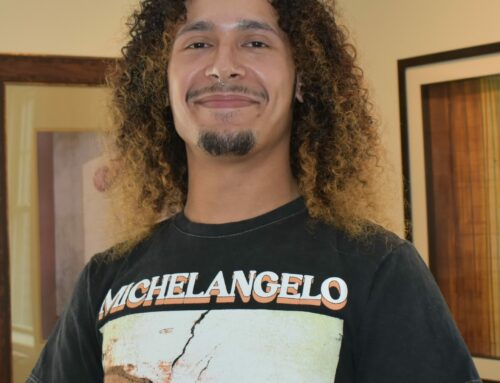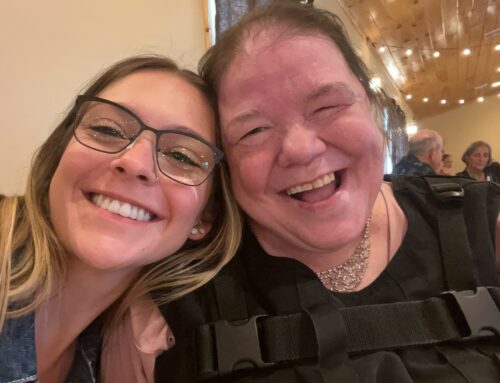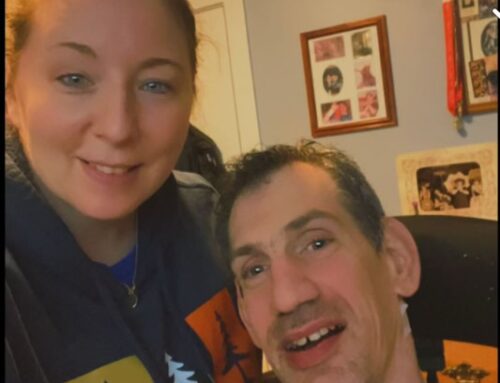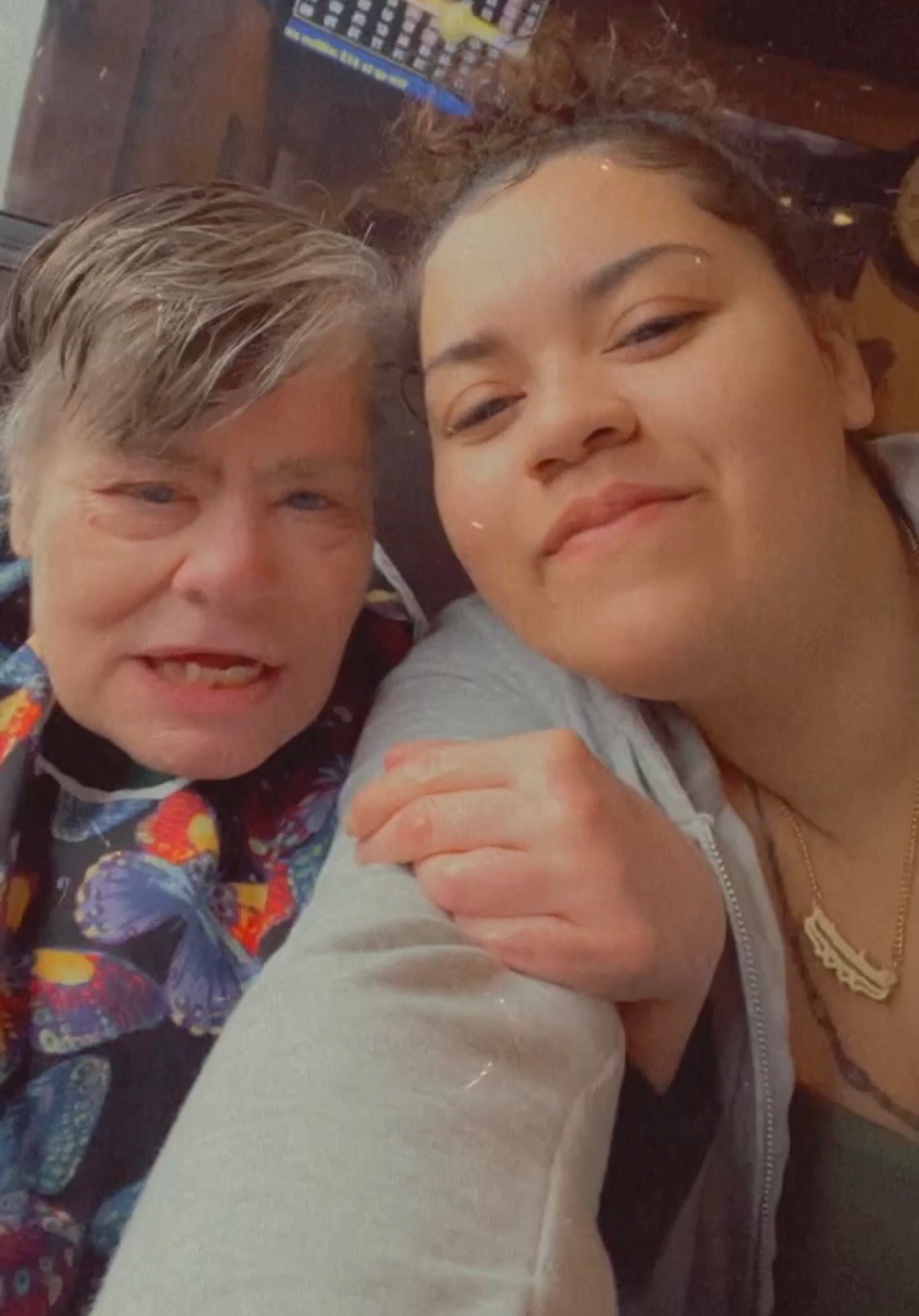 Sharon is 70-years-old, non-verbal, and has not walked for more than 10 years — until she met Deshauntae. Deshauntae, new to BCArc when they met, was intimidated by Sharon. “I had never done anything like this job, and had no idea how to relate to her.”
Sharon is 70-years-old, non-verbal, and has not walked for more than 10 years — until she met Deshauntae. Deshauntae, new to BCArc when they met, was intimidated by Sharon. “I had never done anything like this job, and had no idea how to relate to her.”
As Deshauntae started getting comfortable working at BCArc, she started noticing details. “I saw her pushing her sleeves up by herself for the first time, and how she held her own weight during the transition from the wheelchair to the bed. I wondered if she could do more than we all thought. So I started pressing her to reach more goals, including taking steps.”
Sharon didn’t like this pressure at first, but Deshauntae pressed on. “I kept at it,” said Desauntae. “Eventually, she just started going for it. Now she walks to the kitchen, pulls out her own chair. You can see the pride on her face.”
Asked how she reached Sharon so successfully, she said, “We just clicked, I can’t explain how it happened. Now I just love being with her. We kind of inspire each other.”
Sharon has been with BCArc many years, but has never walked like this on her own, said Tracy, who has overseen Sharon’s residential program the past 10 years.
“Sharon lights up when Deshauntae enters the room,” Tracy said. “I’ve never seen her connect with anyone like the two of them do. It’s that connection that has motivated Sharon to walk like this.”
Sharon walked most of her life. But in 2007 and 2009 she broke her hips, and never recovered to her pre-accident condition.
“Sharon lights up when Deshauntae enters the room,” Tracy said. “I’ve never seen her connect with anyone like the two of them do. It’s that connection that has motivated Sharon to walk like this.”
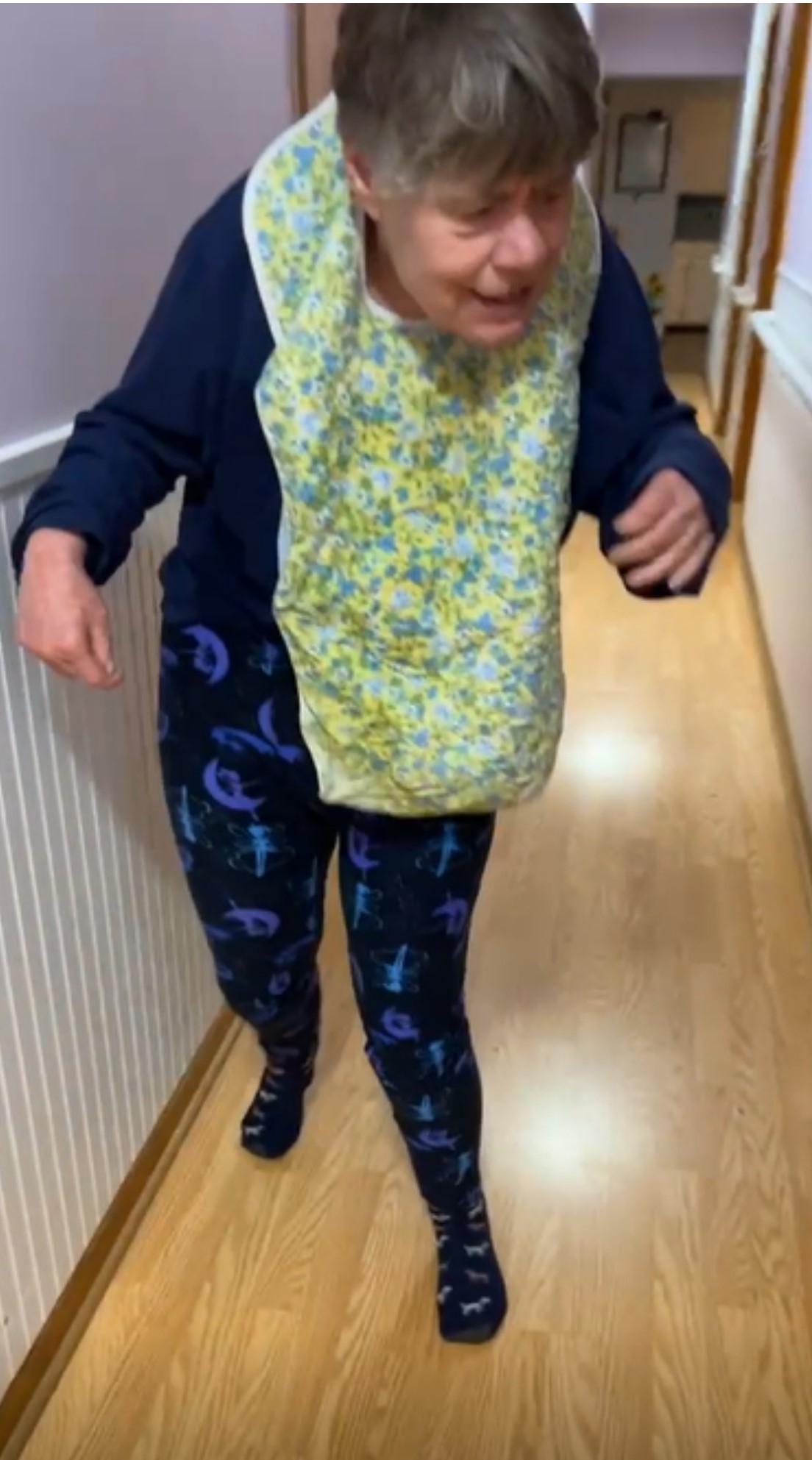 “I Didn’t Want to Work in Human Services”
“I Didn’t Want to Work in Human Services”
“I was terrified when I started working here,” Deshauntae explains.
She worked in a factory and before that in retail jobs. She started at BCArc rotating among three programs as a relief worker. She liked the flexibility of controlling her own schedule. She eventually settled on Sharon’s program, where she felt the most comfortable. But Sharon made her more nervous than the other individuals at the house.
“I was nervous about it all, but as I grew comfortable, it started to feel like home. That’s when I began becoming more observant, and noticing details.”
Today, Deshauntae calls Sharon her best friend. “When I talk to her, I know she understands me. It’s weird how close we are, how happy she makes me feel.”


